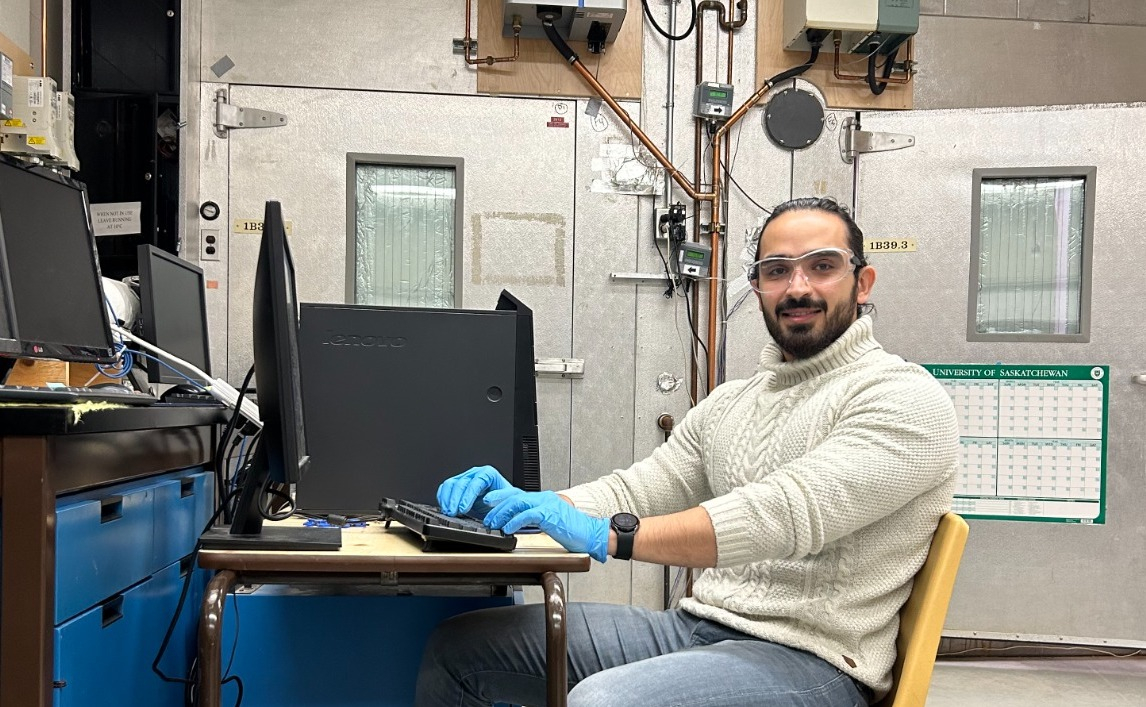Saskatchewan researchers are looking for ways to help heat pumps stay frost-free in the cold.
Amirreza Mahmoudi, a PhD candidate at the University of Saskatchewan, said while heat pump technology is improving, frost is proving a formidable foe because it latches onto coils and lowers performance during freezing winters. His work is part of a larger research effort at the university that is looking at ways to address frost in heat pumps.
Heat pumps, which act as heaters in the winter and air conditioners in the summer, are becoming an increasingly popular swap for homes running on natural gas or oil. Heating systems that use fossil fuels can reach up to 98 per cent efficiency, while heat pumps can be 200 to 540 per cent efficient because they transfer heat rather than generate it.
Since they use significantly less electricity and don’t run on fossil fuels, heat pumps are an important way to reduce emissions, especially as Canada moves towards its goal of net-zero emissions by 2050.
Mahmoudi’s research is focused on finding a retrofit solution for the heat pumps already being produced to make them frost-resistant. The most promising so far is an effort to integrate a membrane into a conventional heat pump to prevent frost.
Typically, heat pumps resemble air conditioners and sit outside a home. Refrigerant fluid runs through exterior coils, transferring heat from the air outside to the home inside. In humid climates, like Atlantic Canada, condensation can latch to those coils and freeze.
Heat pumps have a defrost cycle to address the issue of frost buildup. When it gets especially cold and frost accumulates, heat pumps shut down and go into defrost mode. When that happens, a backup heat source — such as oil, gas or electricity — comes on. While some heat pumps can operate without backup sources, cold climates typically require them, otherwise, cold air is blown into homes during the defrost cycle without heat to replace it.
Reducing frost on heat pumps would curtail the need for backup heat sources while also reducing emissions, and as a result, home heating bills, explains Mahmoudi. He says the key to a frost-free system could be to protect the coils with membrane energy exchangers, which have small pores to allow moisture to travel through. Inside the exchanger is a liquid desiccant, much like silica gel packets that you might find in a box with new electronics, to absorb moisture.
These membranes have been shown to prevent frosting in other machinery such as home ventilation systems, but have not yet been used with heat pumps, Mahmoudi said.
“We just have to figure out how we combine these two things, membrane energy exchangers and heat pumps, to work as a single device that can be commercialized,” he explained.
“It's important because when you're thinking about the commercial products, you have to think about all the manufacturer's abilities and being cost-effective.”
At the University of Saskatchewan, Mahmoudi works with Siddhartha Gollamudi in a research group to address current barriers hindering the widespread adoption of heat pumps in Canada. Mahmoudi said the group’s frost research is in the preliminary stage, and he is trying to figure out how frost hinders the performance of heat pumps and ways around it.
While frost is the most pressing issue for wet coastal communities, in places like the Prairies, the challenge is more about heat pump performance in extremely cold temperatures. In Saskatchewan, temperatures can reach up to -40 C, but it’s very dry, so Gollamudi is researching how to make heat pumps efficient in especially cold temperatures.
Natural gas is much cheaper than electricity in Saskatchewan, so efficiency is key, explained Gollamudi. A recent paper out of Oxford University found heat pumps are two to three times more efficient — or use two to three times less energy — than their oil and gas counterparts, specifically in temperatures ranging from 10 C to -20 C.
But for widespread heat pump adoption to be successful and feasible across Canada, the issues of frost and efficiency in temperatures below -20 C will need to be addressed.
“Each province has its own challenge in terms of performance, in terms of economics, in terms of emissions. Heat pumps are part of a solution, and not the only solution, because you have to get your grid cleaner for these systems to work,” explained Gollamudi.
Updates and corrections
| Corrections policyThis article has been updated to provide clarity on how Mahmoudi is researching membrane energy exchangers and heat pumps.






Comments